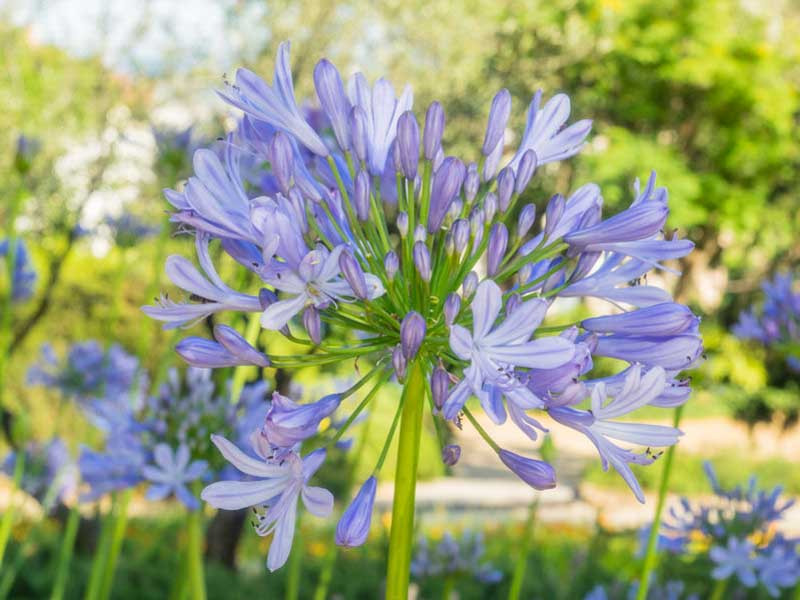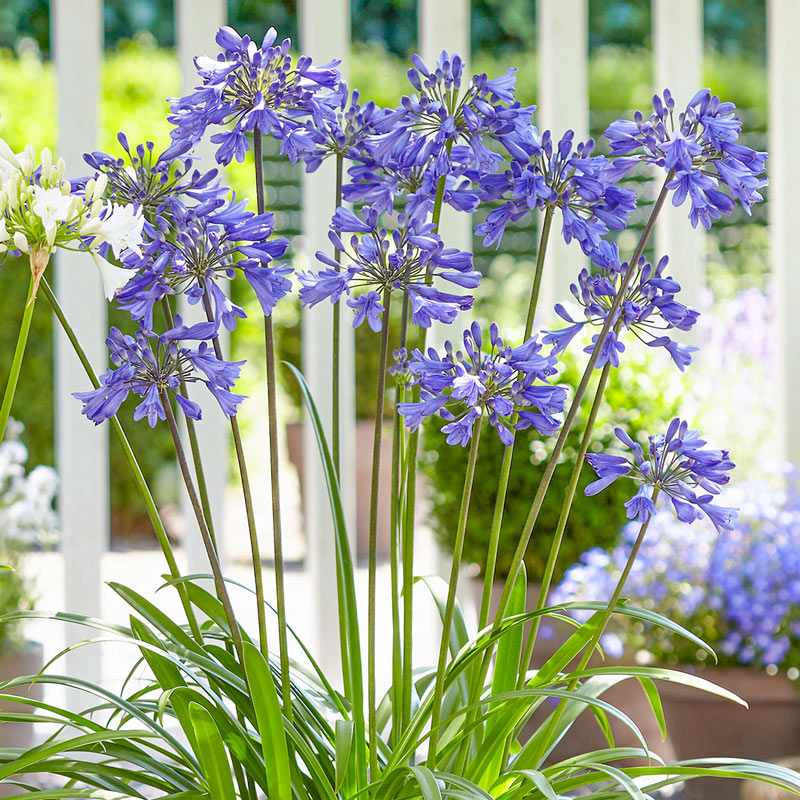Understanding the Art of Agapanthus Treatment: Important Steps for Healthy And Balanced Development and Dynamic Blossoms
In the world of horticulture, the farming of agapanthus stands as a satisfying undertaking for those who seek to nurture these stylish flowering plants. With their striking flowers and elegant foliage, agapanthus has captured the focus of garden enthusiasts worldwide. Nonetheless, accomplishing optimum development and vibrant blossoms needs a nuanced method that incorporates numerous important steps. From selecting the appropriate selection to grasping trimming strategies, the journey towards growing thriving agapanthus plants is diverse and holds the vital to opening the full capacity of these botanical gems.

Selecting the Right Agapanthus Range

When picking the best Agapanthus range for your garden, think about variables such as climate viability, blossom color, and development habit. Furthermore, consider the climate in your area to ensure the Agapanthus range you select can prosper in your particular problems. Comprehending the development behavior of various Agapanthus selections is critical for appropriate positioning within your yard.
Perfect Planting Conditions
Taking into consideration the optimum environmental needs is vital for successful Agapanthus cultivation. Agapanthus plants are sensitive to chilly temperature levels and ought to be secured from frost during wintertime months.
To ensure healthy and balanced growth and vivid blooms, plant Agapanthus light bulbs at a depth of concerning 2-4 inches and space them 8-12 inches apart. Mulching around the base of the plants assists maintain dampness and reduces weed growth.
Watering and Fertilizing Tips
Preserving appropriate wetness degrees and offering important nutrients are key elements in the care program for Agapanthus plants. When it comes to sprinkling Agapanthus, it is vital to strike an equilibrium. These plants like continually damp soil but are at risk to root rot if overwatered.
Feeding Agapanthus is vital for promoting healthy growth and respected flowers. Use a well balanced fertilizer, such as a 10-10-10 formula, in the early springtime as new growth emerges. By following these watering and feeding suggestions, you can guarantee your Agapanthus plants grow and produce dynamic, resilient blossoms.
Pruning Strategies for Agapanthus
Trimming Agapanthus plants at the ideal times and with appropriate methods is critical for preserving their health and advertising optimal development and blooming. The excellent time to prune Agapanthus is in late winter season or very early springtime prior to new development emerges. Begin by getting rid of any yellowing or dead fallen leaves near the base of the plant. Cut them as short as feasible without damaging the emerging shoots.
Deadheading invested blossoms can also reroute the plant's power right into creating even more blooms instead than setting seeds. If you desire to accumulate seeds for breeding, leave some blossoms to completely dry and mature on the plant.
Remember to make use of clean, sharp devices to make exact cuts and reduce the risk of introducing diseases. Agapanthus. Routine trimming will help keep your Agapanthus looking neat and healthy and balanced while making sure a bountiful screen of beautiful flowers
Dealing With Usual Bugs and Conditions
After ensuring correct trimming methods for Agapanthus, it is necessary to deal with usual insects and illness that can impact the health and vigor of these plants. Agapanthus plants are typically hardy yet can still succumb to certain concerns. One common pest that affects Agapanthus find more information is the Agapanthus gall midget. This tiny, orange fly lays its eggs in the vegetation, causing distorted development and blossom buds that fall short to open. To fight this insect, prune and ruin any type of damaged plant parts and take into consideration making use of insecticidal soap.
One more common concern is fungal leaf spot, which offers as dark sores on the leaves. To avoid fungal diseases, make certain excellent air circulation around the he said plants, prevent overhanging watering, and get rid of any type of infected leaves without delay. In addition, Agapanthus plants can experience root rot if they are planted in inadequately draining pipes dirt. To stop this, plant Agapanthus in well-draining dirt and avoid overwatering. By being vigilant and taking prompt action versus illness and insects, you can help your Agapanthus plants prosper and generate vivid blossoms.

Verdict
To conclude, grasping the art of agapanthus care involves picking the right range, offering suitable growing conditions, appropriate watering and fertilizing, suitable pruning methods, and resolving usual insects and conditions. By adhering to these important actions, you can guarantee healthy and balanced development and lively flowers for your agapanthus plants. Bear in mind to regularly keep track of and keep your plants to advertise their overall wellness and longevity.
To make sure healthy development and dynamic blooms, plant Agapanthus bulbs at a depth of about 2-4 inches and area them 8-12 inches apart. By following these watering and fertilizing ideas, you can guarantee your Agapanthus plants thrive and produce vivid, long-lasting blossoms.
One typical bug that impacts Agapanthus is the Agapanthus gall midge. In addition, Agapanthus plants can endure from origin official website rot if they are grown in improperly draining pipes dirt. By following these essential actions, you can make certain healthy and balanced development and dynamic blooms for your agapanthus plants.